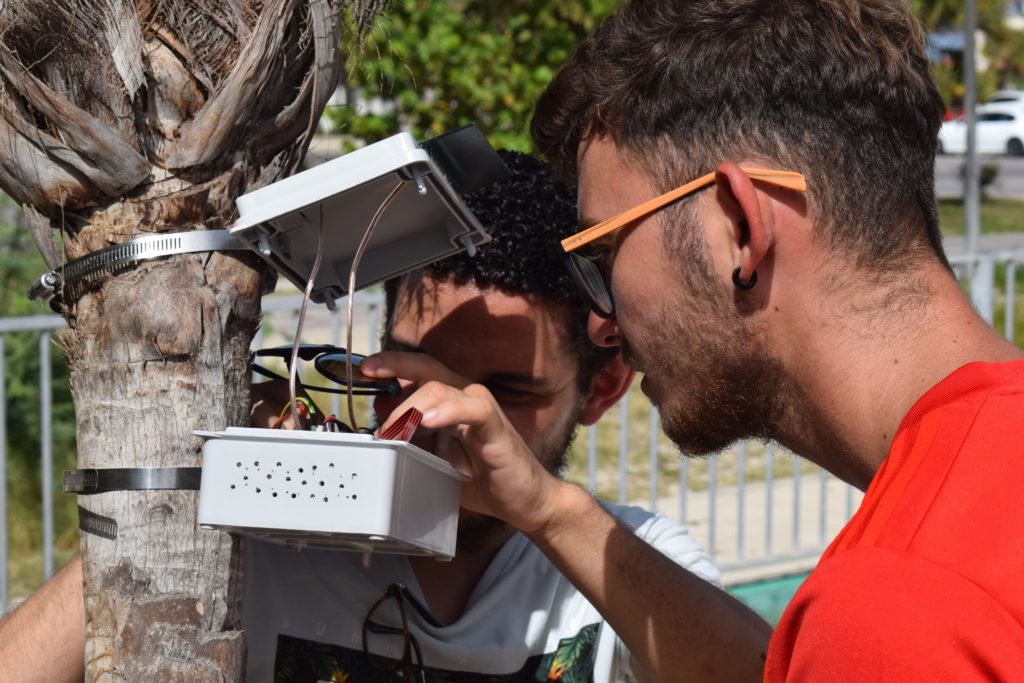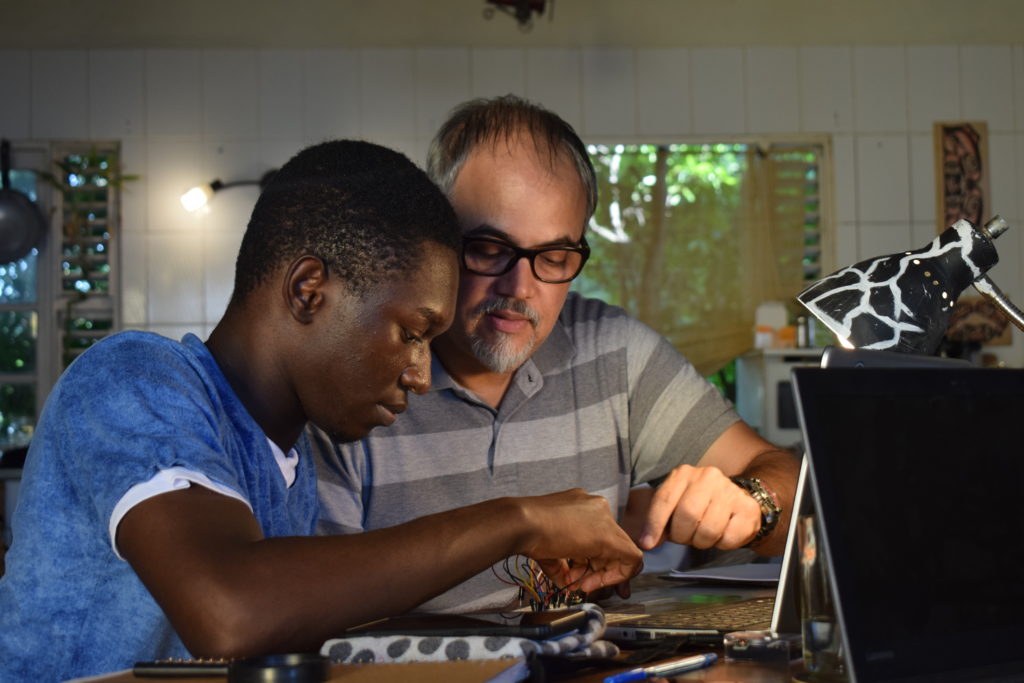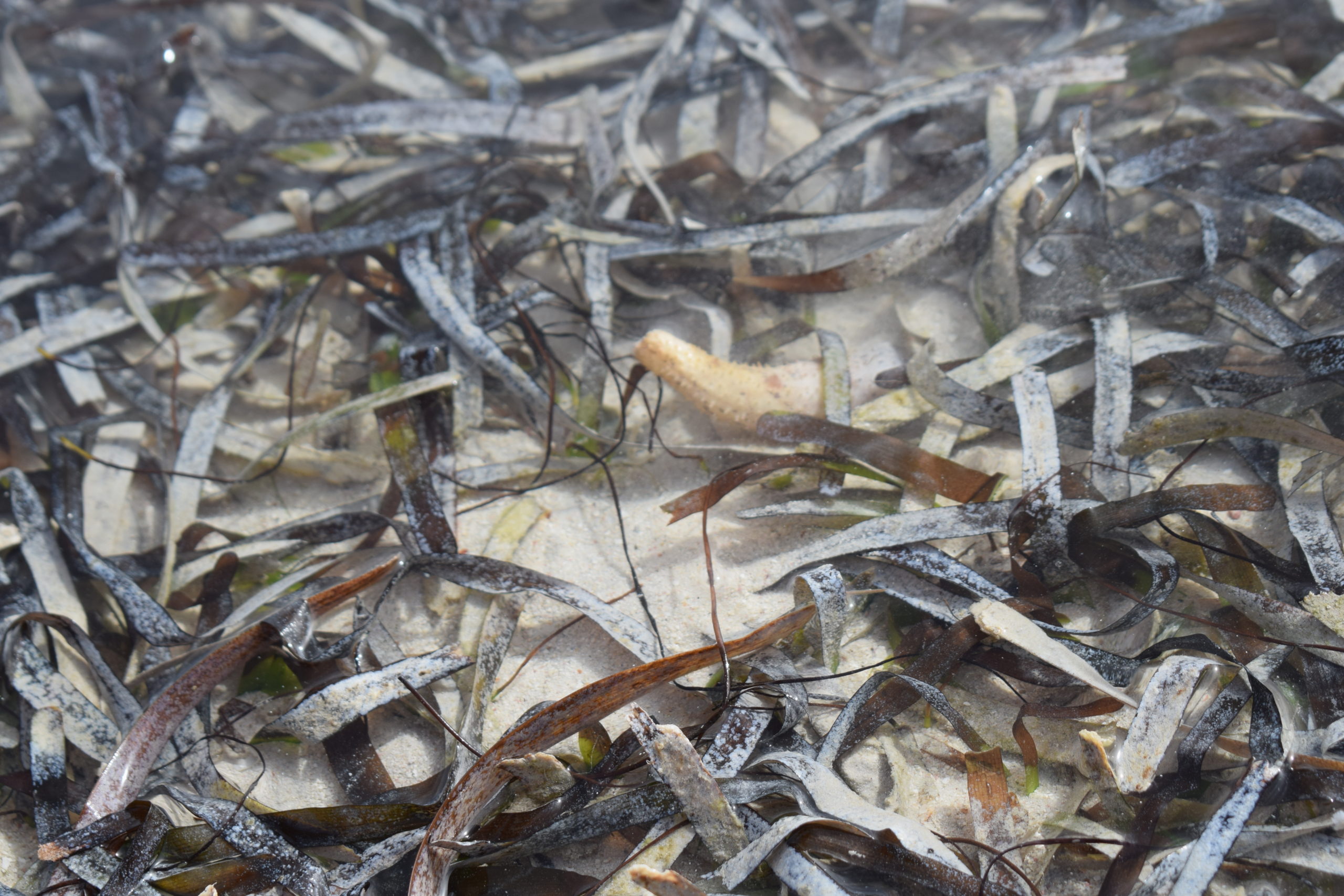Measuring airborne particulate matter
Our air quality monitoring activities have focused on using a small, affordable particulate matter sensor to measure the amount of different sizes of particles present in the air. We have tested a few different designs, and recently compared the readings to those of several reference sensors, in order to validate our measurements. We found that these sensors are generally able to provide a useful indication of particulate matter levels, they are sensitive at low levels of air pollution, possibly due to measurement of water particles, and the readings can be improved with correction for temperature and humidity levels.
We have been working on air quality monitoring for a few years, so we have multiple versions of designs for hardware, software, and documentation. We also have monitors in a variety of locations, with our most recent design installed at Surfside Beach, and older versions installed in Sero Blanco, Bucuti, Pos Chikito, and a couple in Canada.
All of our designs are based on Arduino compatible hardware and software, and most of them make use of the Plantower PMS5003 particulate matter sensor and the Sensirion SHT31 temperature and humidity sensor for measurements.
Quick links
- Version 3 – The First Airbender
- Hardware wiring diagram
- Software libraries and example code (shared with our WAP water monitoring buoy)
- Build instructions
- Data portal for csv downloads
- Version 2 – Airkietenbos
- Hardware wiring diagram
- Software repository
- Pos Chikito dashboard and download links (feeds starting with 3pk)
- Bucuti dashboard and download links (feeds starting with 4pk)
- Version 1 – Airuba
- Data visualization prototype
- Validation report
- Final presentation of results
- Poster summary of results
The First Air Bender
The First Air Bender is our newest air quality monitor which came out of the Surfside Science project, funded by the EU’s RESEMBID programme. Links to the details are above in the Quick Links section, but basically it has two particulate matter sensors, a combined temperature and humidity sensor, a solar panel, battery, and cell tower connection for uploading data.
To build it we approached Sean Brokke who is currently studying at Fontys in ICT technology, to come back for the summer of 2022 to work intensively on the air quality monitor to build a prototype. He has also been working in this area at his university, and succeeded in making our first air quality sensor named, the First Airbender (FAB).

In addition to validating our measurements, one of the important goals with this effort is to share our design and make instructions so that the monitor can be replicated in other locations, around Aruba or on different islands to be able to collect air quality data. All details of the systems are accessible on Github, this includes the code, schematics, and CNC models to make the circuit boards.
In August 2022 on time before returning to his studies in The Netherlands, Sean and his intern Ian were ready to install the First Airbender. This was installed in Neptali Park which is situated next to the Surfside coast on a palmita (small palm tree) who we called Dimitree. From that day on, FAB has been running with little disturbance and collecting data which can be found on our data portal (https://data.brenchies.com) which is still in its functional prototype form, developed by Jeremy Granadillo
In November 2022, Stephen Richards, a then Academic Foundation Year (now SISSTEM Bachelor) student at the University of Aruba, interned with us, testing the replicability of the First Airbender. He worked together with one of our biggest fans, Jeff Romero, to build the Second Airbender (SAB). This was Stephen’s first time working with the elements needed to make the monitor: he had to design, 3D print, wire a breadboard, solder, draw schematics, code in Arduino, and troubleshoot along the way. With the limited experience he had coming in, Stephen was able to make the Second and Third Airbenders (SAB & TAB), and gave us confidence in the replicability of our air quality monitor.

SAB, our second airbender, was initially installed on a sailboat mast at Surfside, not too far from FAB, but recently some issues came up requiring us to bring it back to the shop for repairs. TAB was installed in our backyard for testing, and is looking forward to being installed at Surfside soon.
For validation, Tatiana tested FAB, SAB, and MAB (Mobile Airbender) against a reference meter we borrowed from ACE Engineering Firm, but unfortunately technical difficulties prevented a clear result. We are now pending another validation attempt of our Airbenders, waiting on a bit of paperwork and soon a new reference meter. In total we will place five Airbenders around Surfside beach, and perform validation tests with each of them. Once we have this, we will work a bit on improving our instructions and code repositories to make the monitors replicable, and share the data being collected for use by anyone interested.

